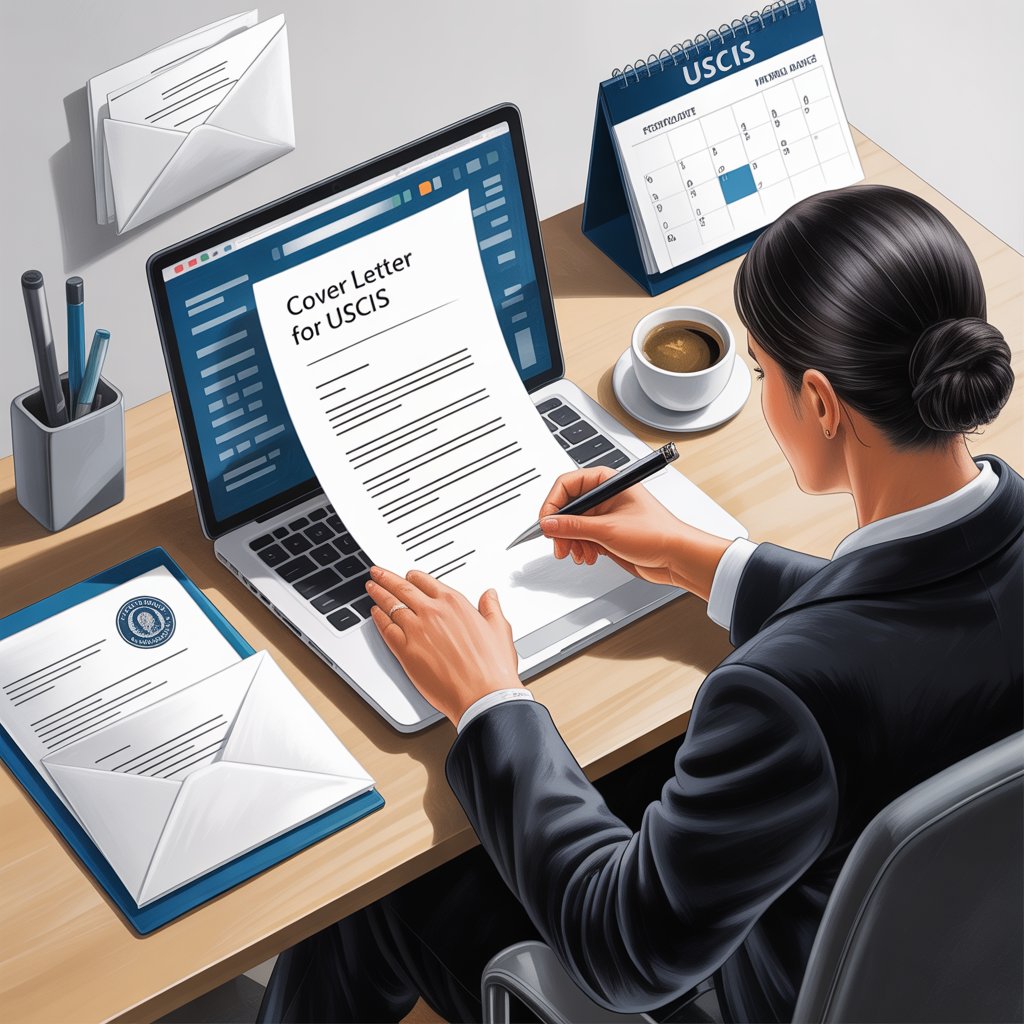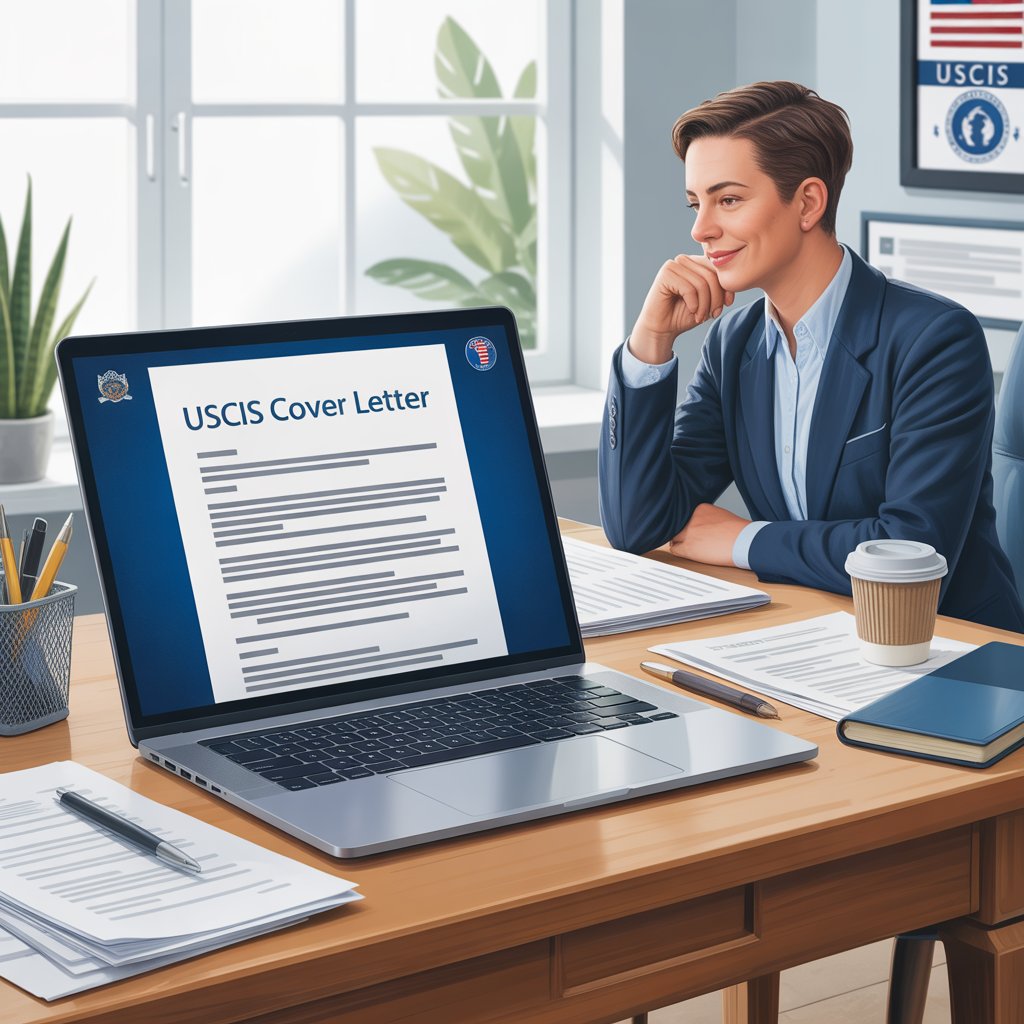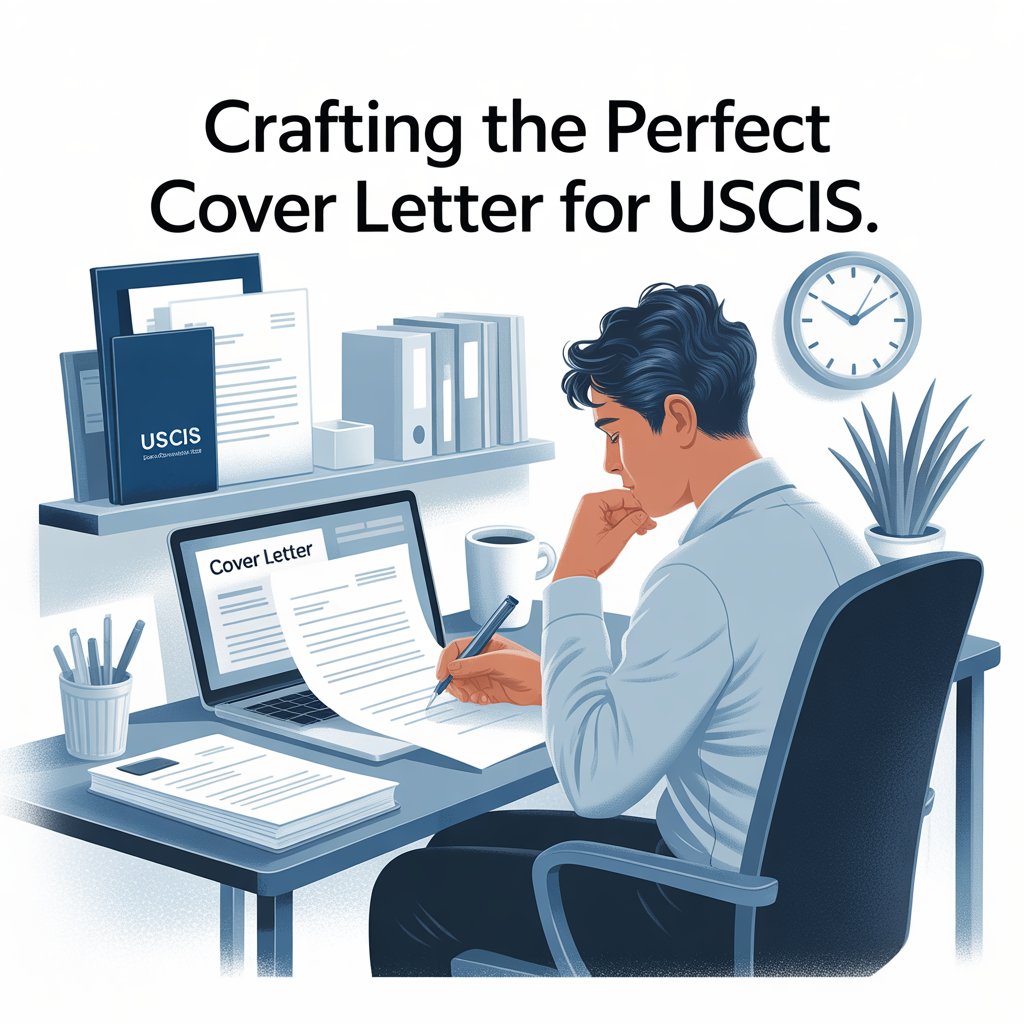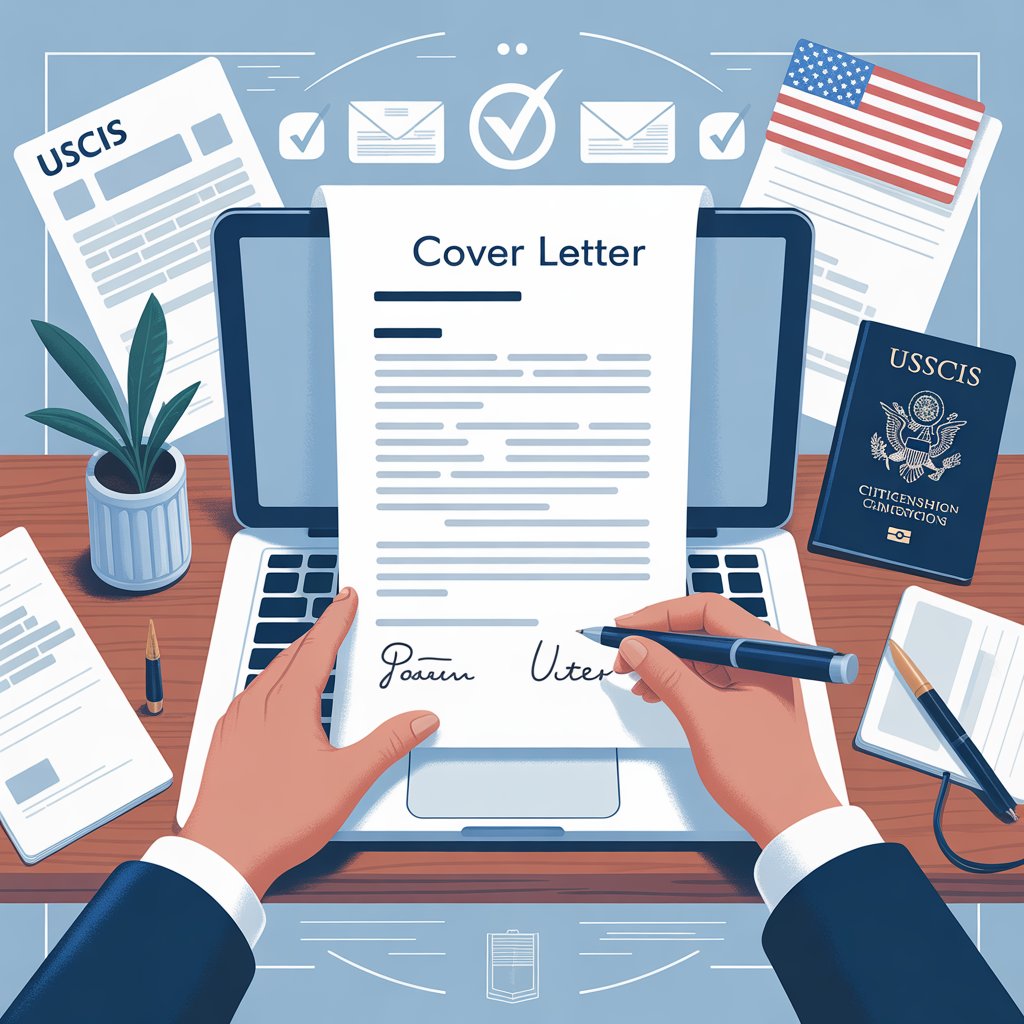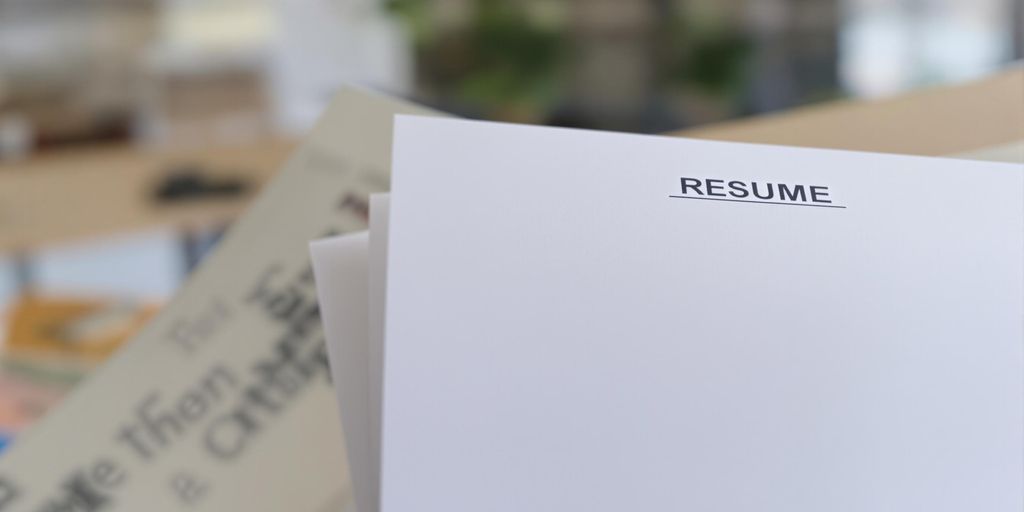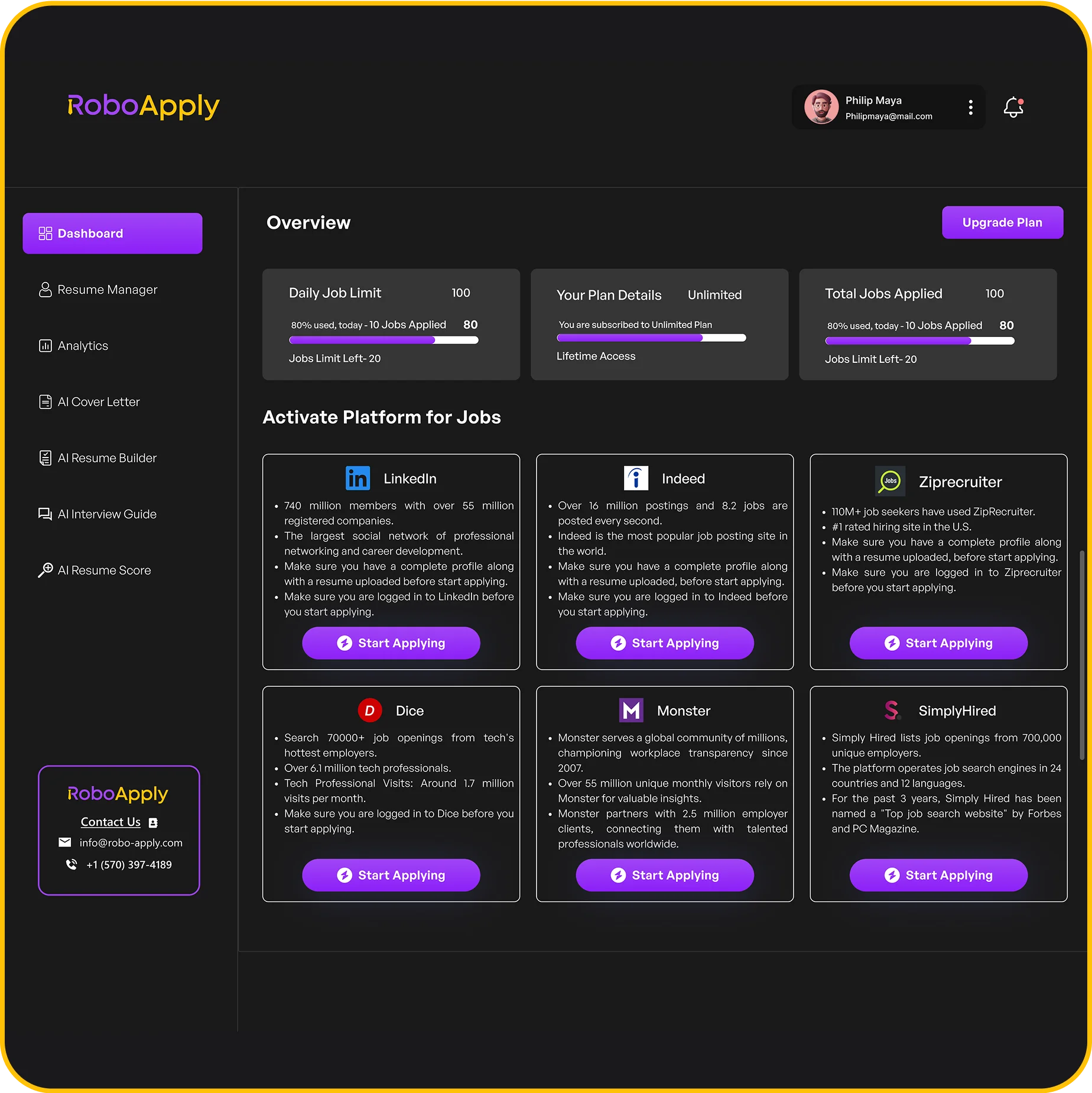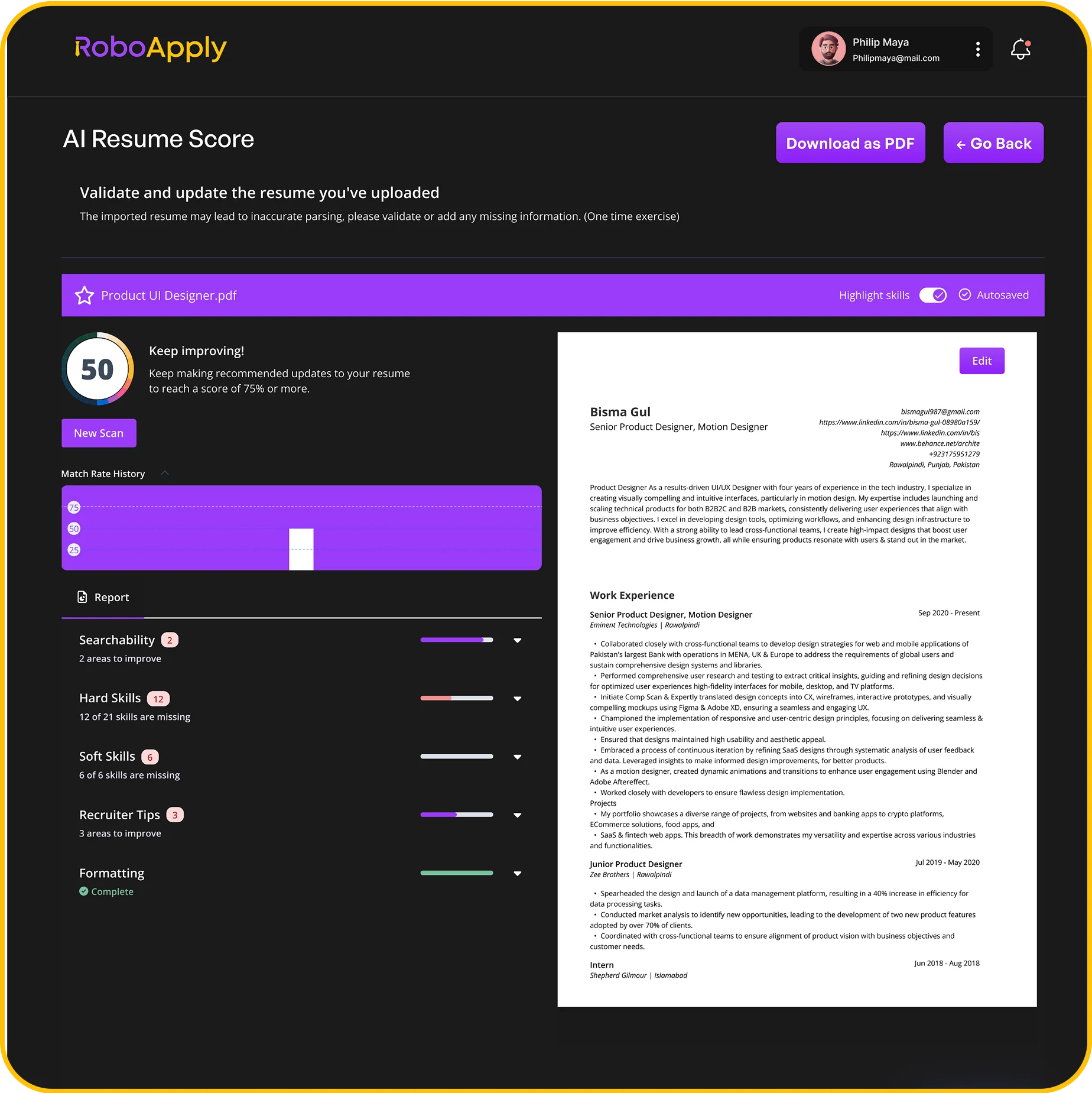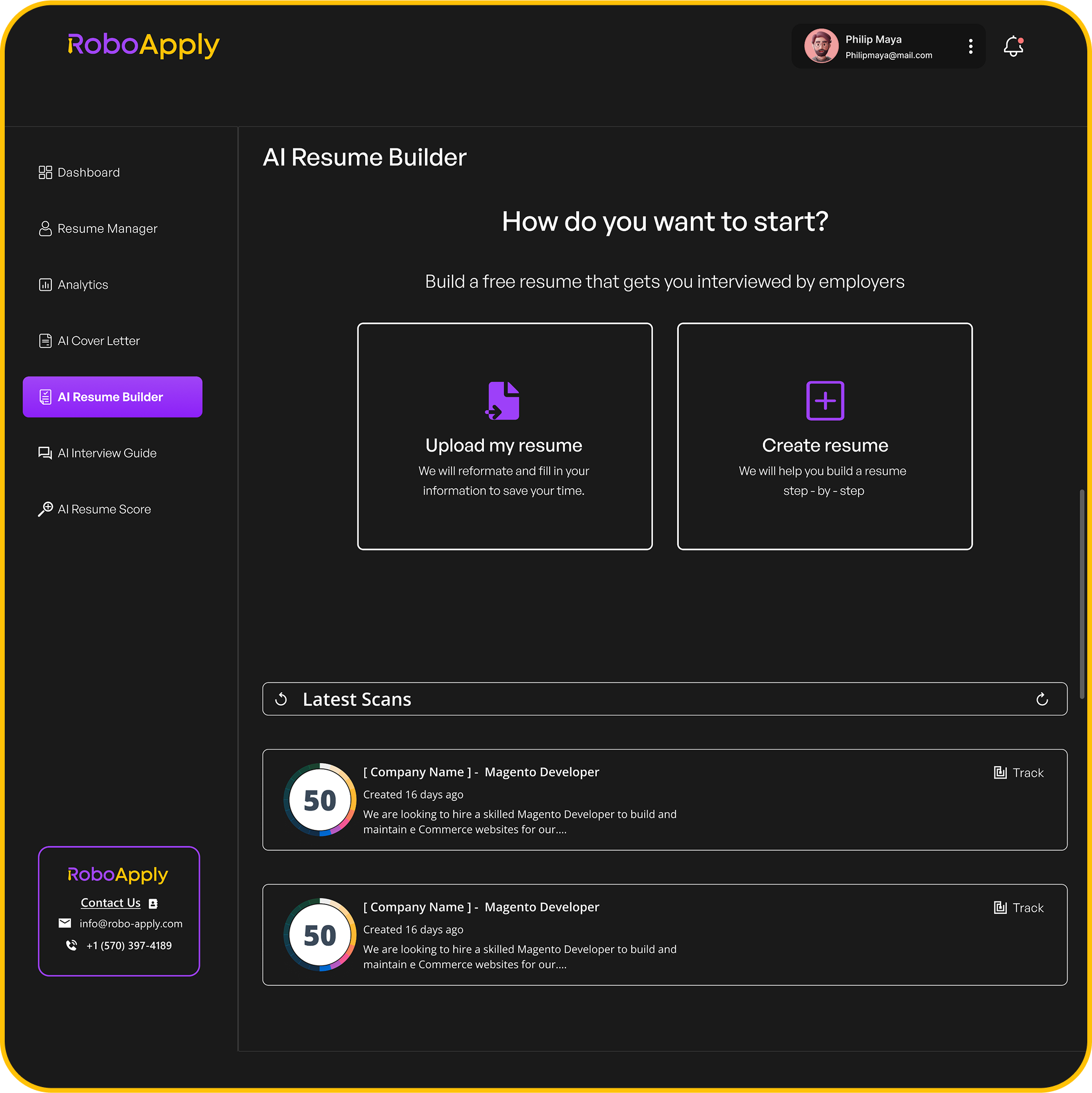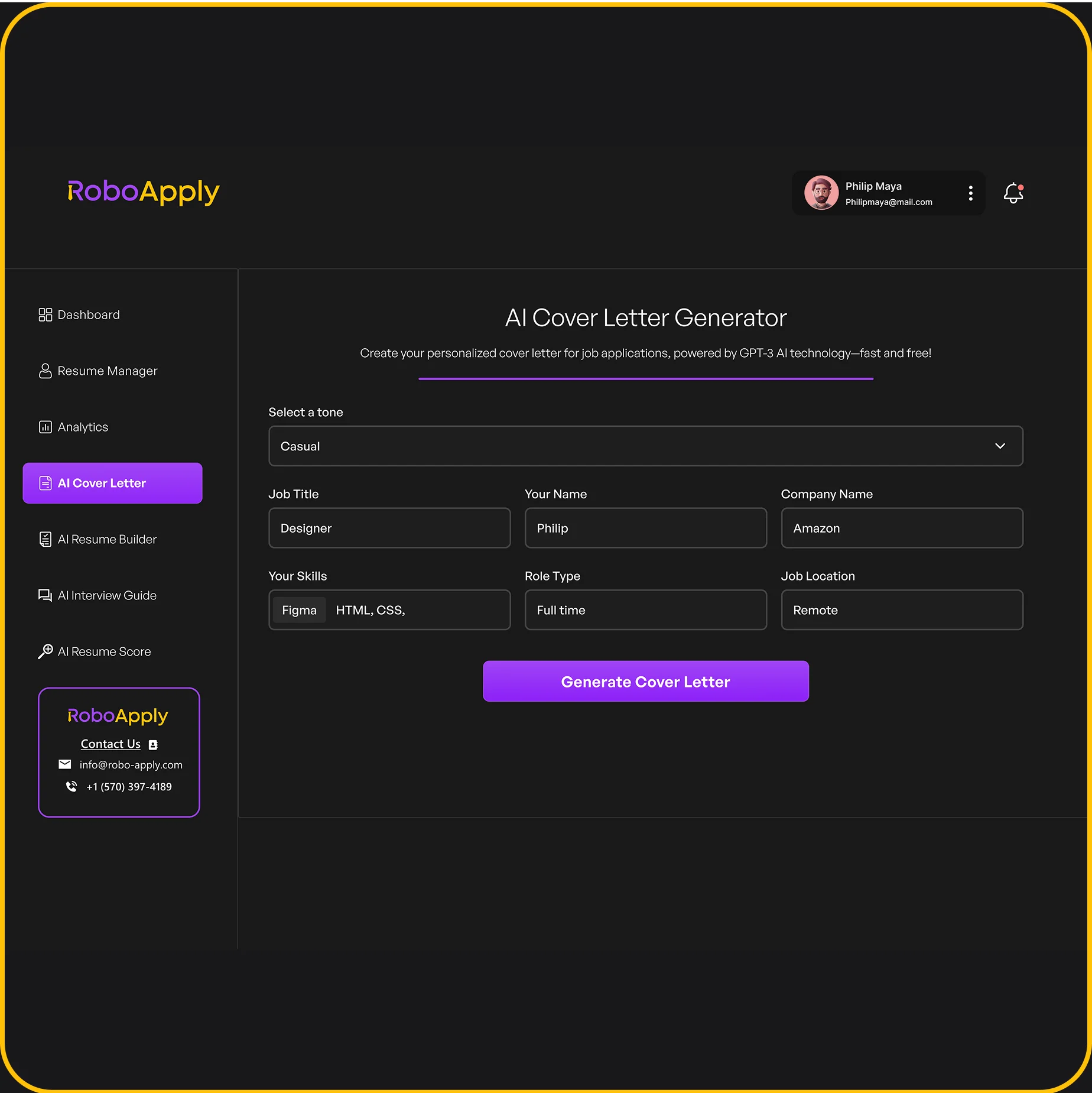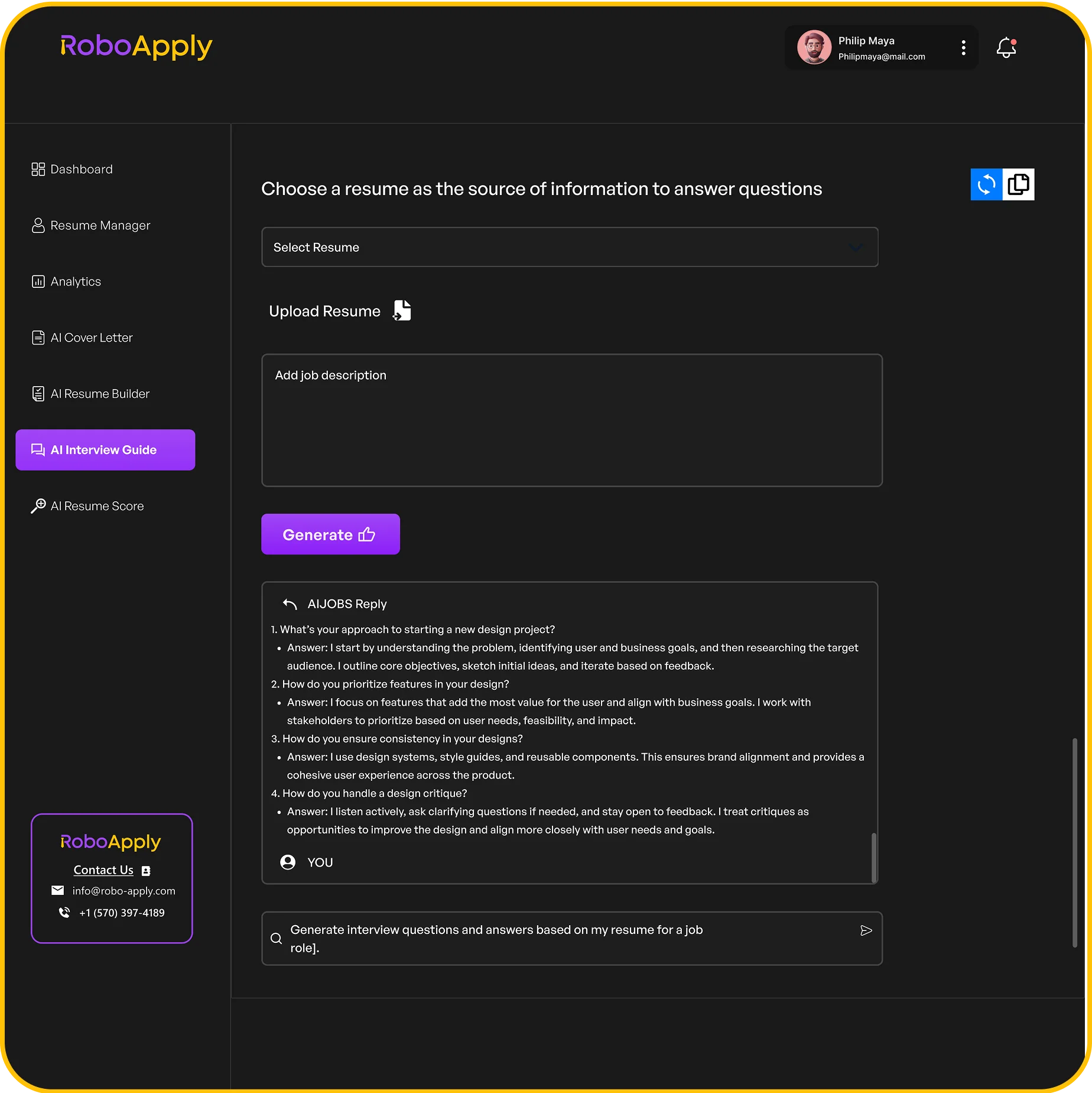When dealing with the U.S. Citizenship and Immigration Services (USCIS), a well-crafted cover letter can really help your application stand out. It’s not just about filling out forms; it’s about presenting your case clearly and effectively. A good cover letter introduces your application, organizes your documents, and makes your intentions clear. This article will guide you through the essentials of writing a cover letter for USCIS, complete with tips, common pitfalls to avoid, and examples to help you get started.
Key Takeaways
- A cover letter for USCIS is crucial for presenting your application clearly.
- Include personal information, purpose, and a list of supporting documents in your letter.
- Use professional language and keep your letter clear and to the point.
- Avoid common mistakes like omitting important details or using informal language.
- Tailor your cover letter to fit the specific type of application you are submitting.
Understanding The Importance Of A Cover Letter For USCIS
Role Of A Cover Letter
Think of a cover letter as your application’s introduction. It’s the first thing a USCIS officer sees, and it sets the tone for everything that follows. A well-written cover letter can significantly aid in organizing your documents and highlighting key aspects of your case. It’s not just about listing what you’re sending; it’s about telling a story and guiding the officer through your application. It provides context, explains any complexities, and makes it easier for the officer to understand your request. It’s like giving them a roadmap to quickly grasp the essentials. For instance, when applying for spouse visa, a cover letter can summarize the relationship’s authenticity.
Benefits Of A Well-Written Letter
So, why bother with a cover letter? Well, a good one can make your application stand out. It shows you’re organized, detail-oriented, and take your application seriously. Here’s a few benefits:
- Clarity: It clarifies the purpose of your application and the documents you’re submitting.
- Organization: It helps USCIS officers easily navigate your application package.
- Personalization: It allows you to address specific concerns or explain unique circumstances.
- Professionalism: It demonstrates your commitment to following proper procedures.
A cover letter isn’t just a formality; it’s an opportunity to present your case in the best possible light. It allows you to control the narrative and ensure that USCIS understands the key elements of your application from the outset.
Common Misconceptions
There are some common misunderstandings about cover letters for USCIS. One is that they’re not always needed. While not strictly required, they are highly recommended. Another misconception is that a template is enough. While templates can be helpful, they should always be customized to your specific situation. Don’t assume that USCIS officers will automatically understand your case without a clear, concise explanation. Also, some people think that if the application is straightforward, a cover letter is unnecessary. However, even in simple cases, a cover letter can help prevent delays and ensure that all necessary information is readily available. For example, if you’re submitting multiple forms like I-131, I-485, I-765, and I-130 after marrying a US citizen, a cover letter can clarify the purpose of each form submitted.
Key Components Of An Effective USCIS Cover Letter
Personal Information
Your cover letter must start with your personal details. This includes your full name, address, phone number, and email address. Make sure this information is accurate and up-to-date. Including your A-number (if you have one) is also a good idea. This helps USCIS quickly identify your file. Accuracy here is key to avoiding delays.
- Full Name
- Address
- Phone Number
- Email Address
- A-Number (if applicable)
Purpose Of The Application
Clearly state the purpose of your application in the cover letter. Are you applying for a visa, a green card, or citizenship? Be specific. Mention the exact form number you are submitting (e.g., I-485, N-400). This helps USCIS understand the context of your submission right away. For example, if you’re applying for a visa request, make sure to specify the type of visa you are seeking.
- State the type of application (e.g., Green Card, Citizenship)
- Mention the specific form number (e.g., I-485, N-400)
- Briefly explain the reason for your application
A clear statement of purpose sets the tone for your entire application. It shows that you understand the process and are organized in your approach.
Supporting Documents List
Include a detailed list of all the documents you are submitting with your application. This list acts as a table of contents for your package. It helps USCIS easily verify that they have received all the necessary paperwork. Use bullet points or a numbered list for clarity. If you’re sending a visa application, list all supporting documents related to your travel plans and financial stability.
- Birth Certificate
- Marriage Certificate (if applicable)
- Passport Copies
- Financial Statements
- Employment Verification
Best Practices For Writing A Cover Letter To USCIS
Using Professional Language
When writing a cover letter to USCIS, it’s important to use language that is both professional and respectful. Avoid slang, contractions, or overly casual phrasing. Your goal is to present yourself as a serious and credible applicant. This means paying close attention to your word choice and sentence structure. Think of it as writing a formal business letter; clarity and precision are key. I remember helping my neighbor with his citizenship application, and we spent a good amount of time refining his language to make sure it was just right. It really does make a difference.
Maintaining Clarity And Conciseness
USCIS officers review a high volume of applications, so it’s important to make your cover letter easy to read and understand. Get straight to the point and avoid unnecessary jargon or overly complex sentences. Clarity is paramount. Use bullet points or numbered lists to organize information, especially when listing supporting documents. A well-organized letter shows that you are detail-oriented and makes the officer’s job easier. I once read a cover letter that was three pages long and full of legal terms – it was a nightmare to get through! Keep it simple and focused.
Structuring Your Letter Effectively
Your cover letter should follow a logical structure to guide the reader through your application. Here’s a basic outline:
- Introduction: State the purpose of your letter and the application you are submitting.
- Body: Provide a brief overview of your qualifications or the reasons for your application. List the supporting documents you are including.
- Conclusion: Thank the officer for their time and consideration. Provide your contact information.
A well-structured letter not only presents your information clearly but also demonstrates your organizational skills. It shows that you’ve taken the time to prepare your application carefully, which can leave a positive impression on the reviewing officer.
Remember to properly address your letter. You can find the USCIS mailing address on their website. Also, when responding to an RFE, make sure to include your case number.
Common Mistakes To Avoid In USCIS Cover Letters
It’s easy to make mistakes when writing a cover letter for USCIS. Even small errors can cause delays or even denials. Let’s look at some common pitfalls and how to avoid them.
Omitting Essential Information
One of the biggest mistakes is leaving out key details. Your cover letter should clearly state the purpose of your application and list all supporting documents. Make sure you include your A-number (if you have one), your full name, and contact information. Without these details, USCIS might have trouble matching your letter to your application. It’s also a good idea to include a sample USCIS cover letter to ensure you’re on the right track.
- Your full name and address
- A-number (if applicable)
- The specific form number you are submitting
Using Informal Language
Your cover letter should always be professional. Avoid slang, contractions, and overly casual language. Remember, this is a formal communication with a government agency. Using a professional tone shows respect and seriousness. Think of it as writing a business letter, not texting a friend. For example, instead of saying “I’m hoping to get my green card soon,” say “I respectfully request consideration for my green card application.”
Neglecting To Proofread
Typos and grammatical errors can make your application look sloppy. Always proofread your cover letter carefully before submitting it. It can be helpful to have someone else read it over as well. Even small mistakes can undermine your credibility. Pay close attention to spelling, grammar, and punctuation. A well-written letter shows that you care about the details and that you’re taking the application process seriously.
Proofreading is not just about catching typos; it’s about ensuring clarity and professionalism. A polished cover letter reflects your attention to detail and respect for the USCIS process.
Tailoring Your Cover Letter To Specific Applications
It’s super important to understand that a one-size-fits-all cover letter just won’t cut it when you’re dealing with USCIS. Each application type has its own set of requirements and nuances. You really need to customize your cover letter to match the specific application you’re submitting. This shows you’ve paid attention to detail and are serious about your case. Let’s look at how to do this for different types of applications.
Visa Applications
When you’re working on a visa application, your cover letter should clearly state the type of visa you’re applying for and the purpose of your visit. Be specific! If it’s a tourist visa, mention your travel dates and itinerary. If it’s a student visa, include the name of the school and the program you’ll be attending. It’s also a good idea to briefly explain why you’re choosing to study in the U.S. and what your academic goals are. Make sure to tailor your cover letter for applying visa to the specific requirements of the visa type and the country’s expectations. This might involve researching particular visa requirements, such as those for a cover letter for Schengen visa, which may need detailed travel itineraries and proof of accommodation for each country you plan to visit.
- State the visa type clearly.
- Explain the purpose of your visit.
- Include relevant dates and locations.
Green Card Petitions
For green card petitions, your cover letter needs to highlight your eligibility for the specific category you’re applying under. If it’s a family-based petition, explain your relationship to the U.S. citizen or lawful permanent resident who is sponsoring you. If it’s an employment-based petition, describe your job skills and how they benefit the U.S. economy. Don’t forget to mention any previous immigration history, such as prior visa applications or stays in the U.S.
It’s a good idea to include a brief summary of your background and qualifications, even if they’re already detailed in other documents. This helps the USCIS officer quickly understand your case.
- Specify the green card category.
- Explain your eligibility.
- Summarize your background.
Citizenship Applications
When applying for citizenship, your cover letter should emphasize your commitment to the U.S. and your understanding of the responsibilities of citizenship. Mention how long you’ve been a lawful permanent resident and any ties you have to the community, such as volunteer work or membership in local organizations. It’s also a good idea to address any potential issues in your application, such as past arrests or periods of absence from the U.S. Be honest and upfront, and explain how you’ve resolved these issues. You may need to provide necessary documentation to the United States Citizenship and Immigration Services.
- Highlight your commitment to the U.S.
- Mention community ties.
- Address any potential issues.
Formatting Guidelines For USCIS Cover Letters
When submitting documents to USCIS, the presentation is almost as important as the content. A well-formatted cover letter shows you’re organized and serious about your application. Let’s break down the key formatting aspects to ensure your cover letter makes a positive first impression.
Proper Addressing And Salutation
Getting the address right is the first step. Always address your letter to the specific USCIS office handling your case. You can usually find this information on the USCIS website or by calling their customer service center. As for the salutation, stick to professional options like “Dear USCIS Officer” or “To Whom It May Concern.” Avoid casual greetings.
Logical Structure
Think of your cover letter as a mini-roadmap for your application. It should have a clear beginning, middle, and end. Start by stating the purpose of your letter and the application you’re submitting. The middle section should provide a brief overview of the supporting documents and any relevant details. Conclude with a thank you and your contact information. A logical structure helps the USCIS officer quickly understand the contents of your submission. You can use a USCIS letter template to help with the structure.
Use Of Bullet Points
Bullet points are your friend! They’re great for listing supporting documents or highlighting key information. Instead of writing long, dense paragraphs, use bullet points to break up the text and make it easier to read. This is especially helpful when you have a lot of documents to list. Here’s why bullet points are useful:
- They improve readability.
- They highlight important information.
- They make your letter look more organized.
Remember, a well-formatted cover letter reflects your attention to detail and professionalism. It’s a small thing that can make a big difference in how your application is perceived. Take the time to get it right, and you’ll be one step closer to a successful outcome.
Examples Of Successful USCIS Cover Letters
Sample Cover Letter For Visa Application
Crafting a strong cover letter is key when applying for a visa. It’s your chance to clearly state the purpose of your visit and highlight why you meet all the requirements. A well-written visa cover letter can significantly improve your chances of approval.
- Clearly state the type of visa you are applying for.
- Explain the reason for your visit (tourism, work, study, etc.).
- Provide details about your travel dates and itinerary.
A good visa application cover letter should be concise, well-organized, and tailored to the specific type of visa you’re seeking. It should also demonstrate your understanding of and commitment to complying with all visa regulations.
Sample Cover Letter For Green Card
Applying for a green card is a big step, and your cover letter needs to reflect that. It should clearly outline the basis for your eligibility and provide a roadmap for the USCIS officer reviewing your case. Think of it as your introduction to the entire application package. You can find a green card sample online.
- State the basis for your green card application (family-based, employment-based, etc.).
- Summarize your qualifications and eligibility criteria.
- List all supporting documents included in your application.
Sample Cover Letter For Citizenship
When applying for citizenship, your cover letter should emphasize your commitment to the United States and your understanding of the responsibilities that come with citizenship. It’s an opportunity to showcase your lawful permanent resident status and your adherence to all requirements.
- Confirm your eligibility for naturalization.
- Highlight your continuous residence and physical presence in the U.S.
- Attest to your good moral character.
Utilizing Templates For Your USCIS Cover Letter
Benefits Of Using Templates
Using templates for your USCIS cover letter can be a smart move. It helps ensure you include all the necessary information and follow the correct format. Think of it as a guide that keeps you on track. It’s like having a checklist to make sure you don’t miss anything important. Plus, it can save you time and effort, especially if you’re not sure where to start. A well-structured template can also make your application look more professional, which can leave a good impression on the USCIS officer reviewing your case. You can find a lawyer cover letter online.
Where To Find Reliable Templates
Finding the right template is key. Not all templates are created equal. Some might be outdated or not tailored to your specific situation. Here are some places to look:
- USCIS Website: Check the official USCIS website for any sample letters or guidelines they provide. These are usually the most accurate and up-to-date.
- Immigration Attorneys: Many immigration attorneys offer sample cover letters or templates on their websites. These are often tailored to specific types of applications.
- Reputable Legal Websites: Look for legal websites that specialize in immigration law. They often have resources and templates available for download.
It’s important to verify the source of the template and make sure it’s from a reliable and trustworthy source. Don’t just grab the first template you find online. Take the time to do your research and find one that’s appropriate for your needs.
Customizing Templates For Your Needs
While templates are a great starting point, it’s crucial to customize them to fit your specific situation. Don’t just copy and paste the template without making any changes. Here’s how to customize a template:
- Review the Template Carefully: Read through the entire template and make sure you understand what each section is asking for.
- Replace Placeholder Text: Replace all the placeholder text with your own information. Be sure to double-check that all the information is accurate and up-to-date.
- Add Specific Details: Include any specific details about your case that are not covered in the template. This might include information about your background, your reasons for applying, or any special circumstances that you want the USCIS officer to consider. You can also find a U Visa template online.
Customizing the template will make your cover letter more personal and relevant to your case. It shows that you’ve taken the time to carefully prepare your application and that you’re serious about your immigration journey.
The Role Of A Cover Letter In Your Immigration Journey
Enhancing Your Application’s Presentation
A cover letter acts as the initial point of contact between you and USCIS. It’s your chance to make a strong first impression. Think of it as the packaging for your application; a well-presented package suggests care and attention to detail. It allows you to highlight the most important aspects of your case and guide the officer through the documents you’re submitting. A disorganized application can lead to delays or even denials, so a clear, concise cover letter is invaluable.
Building Credibility With USCIS
Your cover letter is more than just a summary; it’s an opportunity to build trust with USCIS. By clearly stating your intentions and providing a roadmap of your application, you demonstrate respect for the process and the officers reviewing your case. This can be especially helpful if you’re correcting immigration documents or need to explain complex situations. A well-written letter shows that you’re taking your immigration journey seriously and are committed to following all the rules and regulations.
Clarifying Complex Situations
Immigration cases aren’t always straightforward. Sometimes, there are unique circumstances or complicated histories that need explanation. A cover letter provides the perfect space to address these issues directly. You can use it to provide context, explain discrepancies, or offer additional information that might not be immediately apparent from the forms and supporting documents. This is especially useful when expediting an application due to urgent circumstances. By proactively addressing potential concerns, you can help USCIS understand your situation and make a more informed decision.
A cover letter is not a legal requirement, but it’s a powerful tool. It allows you to tell your story, highlight key information, and build a strong case for your immigration application. It’s an investment in your future and a way to show USCIS that you’re serious about your immigration goals.
Here are some key benefits of including a cover letter:
- Provides a clear overview of your application.
- Highlights key supporting documents.
- Explains any unique circumstances or complexities.
- Demonstrates your understanding of the immigration process.
Resources For Crafting Your USCIS Cover Letter 
Online Writing Services
If you’re feeling overwhelmed, there are online services that can help you put together a solid cover letter. These services often have professionals who know what USCIS is looking for. They can provide customized cover letters tailored to your specific situation, which can be a big help if you’re unsure where to start. It’s worth checking out a few different options to find one that fits your budget and needs.
- Pros: Personalized assistance, expert knowledge of USCIS requirements.
- Cons: Can be expensive, requires careful selection to ensure quality.
- Things to consider: Check reviews, compare pricing, and ask about their experience with USCIS applications.
Professional Consultation Options
Sometimes, you need more than just a template or a quick review. That’s where professional consultants come in. These are people who specialize in immigration matters and can offer in-depth advice on your cover letter and overall application. They can help you highlight your strengths and address any potential weaknesses.
Getting a professional to look over your documents can give you peace of mind. They know the ins and outs of the system and can spot potential issues before you submit your application.
Helpful Guides And Articles
There’s a ton of free information out there! USCIS has its own website with guides and instructions. You can also find articles and blog posts that offer tips on writing effective cover letters. Just be sure to use reliable sources and double-check the information to make sure it’s up-to-date. Look for resources that provide UK legal cover letter examples and explain the specific requirements for different types of applications.
- Benefits of using guides: Cost-effective, accessible, provides a general understanding of requirements.
- Drawbacks: May not be tailored to your specific situation, requires careful evaluation of source reliability.
- Where to find them: USCIS website, reputable immigration law firms’ blogs, government publications.
Reviewing And Finalizing Your Cover Letter
Importance Of Feedback
Getting another pair of eyes on your USCIS cover letter is a smart move. Seriously, it’s easy to miss your own mistakes. Ask a friend, family member, or even a professional to read it over. They might catch something you didn’t, like a typo or a confusing sentence. Fresh eyes can make a big difference. It’s about making sure your letter is as clear and effective as possible. This is especially important when dealing with something as important as a USCIS application. Getting feedback can really help with cover letter accuracy.
Final Checks Before Submission
Before you hit that submit button, take a deep breath and go through your cover letter one last time. This is your chance to catch any lingering errors or inconsistencies. Make sure all the information is accurate, especially your contact details and application specifics. Check that you’ve included all the necessary supporting documents and that they’re listed correctly in your letter. It’s also a good idea to double-check the formatting to ensure it meets USCIS requirements. This final review can save you from potential delays or even rejection of your application.
Here’s a quick checklist:
- Verify all personal information.
- Confirm the accuracy of application details.
- Ensure all supporting documents are included and listed.
- Check for typos and grammatical errors.
Ensuring Compliance With USCIS Requirements
Your cover letter needs to play by USCIS’s rules. That means following their guidelines for formatting, content, and any specific instructions related to your application type. Compliance is key. Make sure your letter clearly states the purpose of your application and provides all the information USCIS needs to process it efficiently. If you’re unsure about any requirements, check the USCIS website or consult with an immigration attorney. It’s better to be safe than sorry when it comes to dealing with immigration matters.
A cover letter that doesn’t meet USCIS requirements can cause delays or even rejection. Take the time to understand and follow their guidelines carefully. It’s a small investment of time that can have a big impact on the outcome of your application.
Before you send off your cover letter, take a moment to review it carefully. Check for any spelling or grammar mistakes, and make sure it clearly shows why you are a great fit for the job. Ask a friend or family member to read it too; they might catch things you missed. Once you’re happy with it, don’t wait! Head over to our website to get started on your job applications today!
Wrapping It Up: Your USCIS Cover Letter Matters
In summary, putting together a solid cover letter for your USCIS application is really important. It’s not just a formality; it can help you present your case more clearly and make a good impression. By following the tips and examples we’ve discussed, you can create a letter that stands out. Remember, this letter is your chance to explain your situation and organize your documents in a way that makes sense. So take your time, be clear, and don’t hesitate to use templates to guide you. With a well-crafted cover letter, you’ll be better prepared to tackle the USCIS process.
Frequently Asked Questions
What is the purpose of a cover letter for USCIS?
A cover letter for USCIS introduces your application and helps organize your documents. It explains what you are applying for and why.
What should I include in my USCIS cover letter?
Your cover letter should have your personal details, the reason for your application, and a list of the documents you are submitting.
Can I use a template for my cover letter?
Yes, using a template can help you structure your letter properly. Just make sure to customize it to fit your situation.
How should I address my cover letter to USCIS?
You should address your letter to the appropriate USCIS office. Use a formal greeting like ‘Dear USCIS Officer’.
What are common mistakes to avoid in a USCIS cover letter?
Avoid leaving out important information, using casual language, and not proofreading your letter before sending it.
How can I make my cover letter stand out?
Use clear and professional language, be concise, and ensure your letter is well-organized and easy to read.
Is a cover letter required for all USCIS applications?
While a cover letter is not always required, it can be helpful to clarify your situation and present your application better.
Where can I find examples of USCIS cover letters?
You can find sample cover letters on websites that offer immigration resources, or you can use services that provide templates.
